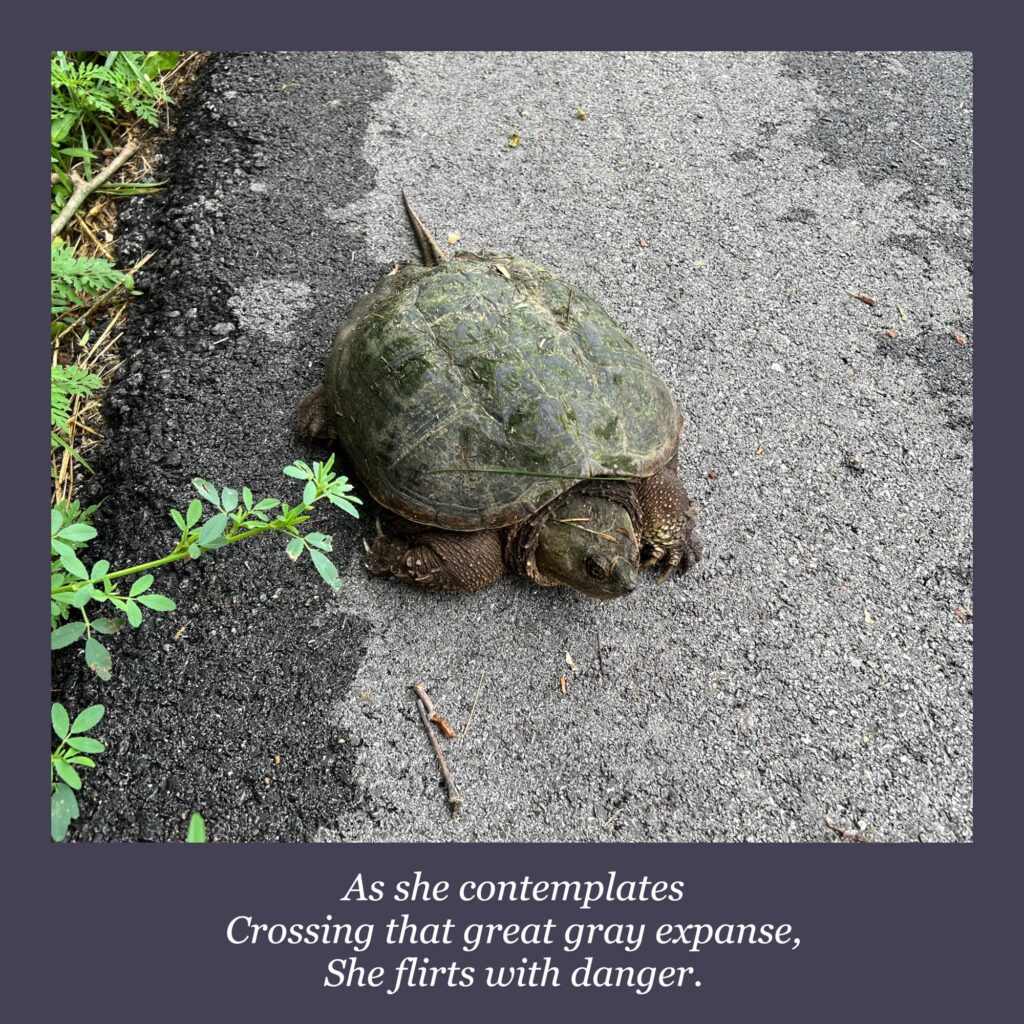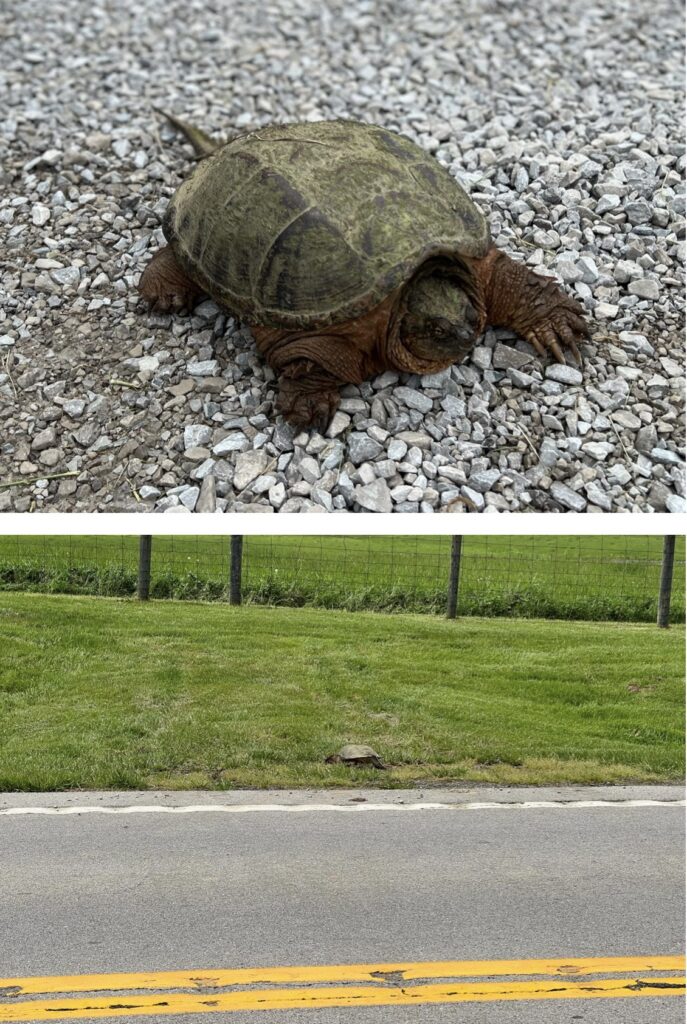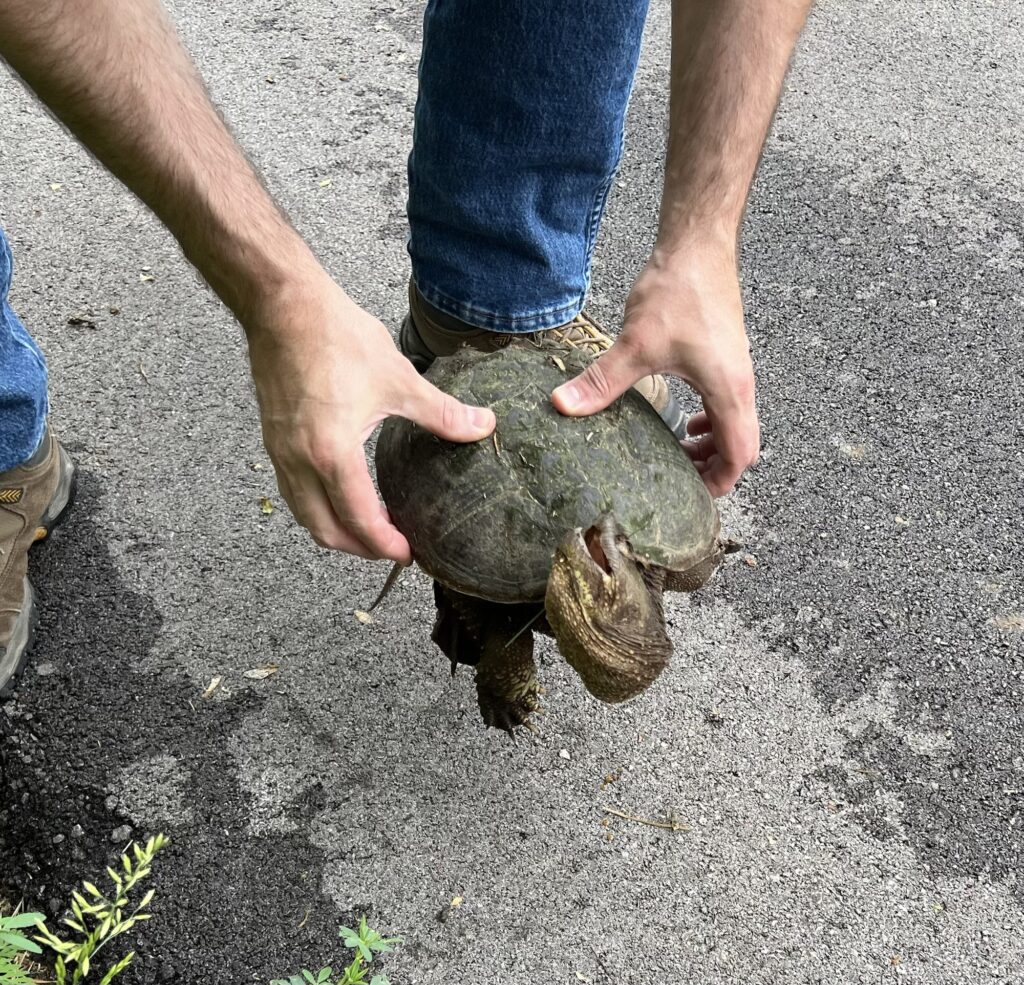
It’s turtle breeding season here, when the urge to find a mate and/or breeding grounds strikes, there’s no dissuading them. Even if it means that they must make a death-defying trek across a busy roadway to get to their destinations. We always try to give our wild turtle friends a helping hand when it’s possible to safely do so, even if that turtle has incredibly strong jaws and feet with sharp claws.
How I wish that turtles had evolved to be faster…it’s almost impossible for a slow-moving turtle to safely cross a busy road or highway, and impossible for them to cross a freeway. And yet they’re driven to get “there”, wherever “there” may be – perhaps another murky pond or swampy marsh – and they just try to do it. They are driven creatures.
This lovely snapping turtle was the second we’ve recently helped cross local highways. In rural areas like ours, highways are great alternatives to busy, frenetic freeways. They often wind through bucolic landscapes lush with greenery, and under the canopies of tall trees. As an added bonus, many of these alternative routes don’t even add much time to the commute.
As much as I enjoy taking in the scenery, I am also watching for wildlife – abundant in these less-traveled areas. Deer may suddenly appear at the edge of a roadway, or even dart into the road; birds dive into brush right in front of the car; squirrels play “chicken” with vehicles, sometimes appearing dead, only to spring up and run away as the car approaches. Vigilance is necessary. Driving should be the driver’s primary focus, not conversing with a passenger, looking at social media, or engaging in any other distractions. We all know this, and yet many people do exactly that: fail to pay attention.
And that failure to attend to job #1 (driving) means that animals (and sometimes people) lose their lives. Sure, a deer jumping out of the brush at the road’s shoulder and into the path of your car is likely going to result in a collision and, under those circumstances, is nearly unavoidable, even if the driver is attentive; conversely, a slow-moving turtle just leaving the shoulder of the road and heading for the other side should, under most circumstances, be avoidable. If the driver is paying attention. Yes, this is a peeve of mine! Put down your d***ed devices and focus on driving!
As a passenger in a vehicle, I serve as a second set of eyes scanning the area around the vehicle. I look for hazards (slowing vehicles, obstructions, etc.) as well as animals needing assistance. I am best-positioned to identify a turtle needing help, and will alert the driver to the situation. When luck is with us, a driveway is nearby for us to pull into while we handle getting the turtle to the other side of the road (noting which direction it was headed in and ensuring that we place it in that direction, or the turtle may cross the road again – they are determined creatures).
Box turtles are beautiful, placid creatures and are easily moved by hand. Snapping turtles, however, (though beautiful in their own way) are a very different story. The last time we moved one across the road, it managed to scratch Mr. fMf’s hand with one of those claws (tough leather gloves should be worn to prevent scratches). We patched him back up and he healed just fine. This time, the turtle was a little smaller, but equally fierce, failing to appreciate that we were only there to help it get to the other side of the rural highway safely.

Turtles should not be held by their tails, as it can cause spinal injury. Snapping turtles must also be held in a special way to ensure that the holder stays well away from those jaws. Once Mr. fMf has grasped the turtle toward the rear of its shell, it immediately swiveled its head around and tried to bite. Their necks have a surprisingly long reach and can move very fast, so it’s critically important that the turtle be held correctly for its safety and the rescuer’s. This video demonstrates multiple techniques for safely moving snapping turtles across a roadway (and I, for one, will be adding a tarp to the car for situations where the turtle can’t safely be lifted, like when it’s a very large snapper).

If you value and enjoy wildlife like we do, be on the lookout for turtles that may need a hand crossing roadways at this time of year. One act of kindness can make a difference for future generations of turtles. Be safe, and be watchful.
